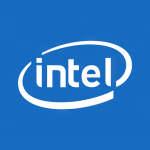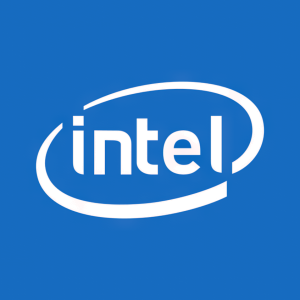Welcome to our dedicated page for Intel news (Ticker: INTC), a resource for investors and traders seeking the latest updates and insights on Intel stock.
Intel Corporation (INTC), the global leader in semiconductor innovation, maintains this dedicated news hub for investors and technology professionals. Access official press releases, financial announcements, and strategic updates directly from the company driving computing advancements worldwide.
This comprehensive resource aggregates Intel's latest developments across key operational areas including processor innovations, manufacturing expansions, and strategic partnerships. Users will find verified information on quarterly earnings, product launches, and technology breakthroughs - all essential for understanding the company's market position.
The curated collection includes updates on data center solutions, AI chip development, foundry services expansion, and sustainability initiatives. Bookmark this page to monitor Intel's progress in advancing semiconductor technology while maintaining awareness of industry-shaping developments.
Intel Corporation has appointed Sunil Shenoy as senior vice president and general manager of its Design Engineering Group, effective February 1, 2021. Shenoy, a 33-year veteran who previously left Intel in 2014, returns to lead the design and manufacturing of system-on-chips for client and data center applications. He will report to CEO Bob Swan until February 15, after which he will report to incoming CEO Pat Gelsinger. Shenoy has extensive experience in microprocessor design, holds an MBA, and has 16 patents in technology.
Moovit, an Intel Company and leading MaaS solutions provider, has launched its 2020 Global Public Transport Report, analyzing data from tens of millions of trip requests in 104 cities across 28 countries. The report highlights the impact of COVID-19 on public transit usage and explores riders' preferences for safe transit options. Notably, Mobileye, Moovit's sister company, plans to leverage this data for future robotaxi services. Key metrics include commute times, user feedback, and mobile payment demand, revealing that many riders seek convenient and safe transportation options.
Intel announced the appointment of Pat Gelsinger as its new chief executive officer, effective Feb. 15, 2021. Gelsinger, a veteran with 40 years in technology and a former Intel employee, succeeds Bob Swan, who will remain CEO until the transition. The board believes Gelsinger’s expertise is vital for Intel’s transformation. Importantly, this change is not related to Intel's 2020 financial performance, as the company expects its Q4 2020 revenue and EPS to surpass earlier guidance. An update on 7nm process technology is anticipated during the Jan. 21 earnings report.
Intel showcased its advancements at CES 2021, emphasizing leadership in technology and product offerings across various platforms. The company introduced the 11th Gen Intel Core vPro processors, highlighting their performance and security features aimed at business, education, and gaming sectors. New processors include the N-series Intel Pentium Silver for education and the H-series mobile processors for gaming. Intel's commitment to enhance user experience is evident with partnerships for education and upcoming Alder Lake technology. The press release underscores Intel's ongoing investment and innovation in computing.
Mobileye, an Intel company, unveiled its strategy for autonomous vehicles (AVs) during CES 2021. CEO Amnon Shashua outlined Mobileye’s plan to lead the AV industry by combining advanced sensing technologies, including Road Experience Management (REM) mapping and True Redundancy safety systems. The new silicon photonics lidar SoC is set for 2025, promising enhanced detection capabilities. Mobileye’s crowdsourced mapping technology tracks nearly 8 million kilometers daily, establishing it as a formidable player in global AV deployment. The emphasis on affordability and scalability is key to their strategy.
Intel Corporation is open to suggestions from investors to enhance shareholder value. The company expresses interest in engaging with Third Point LLC regarding their proposals aimed at achieving this objective. Intel, traded under the symbol INTC, is a leader in technology innovation, focused on advancing semiconductor design and manufacturing to meet global challenges. For more insights into their operations and innovations, visit newsroom.intel.com.
Intel emphasizes the evolution of the PC experience through its collaboration with ecosystem partners since 2018. The company highlights that recent advancements have resulted in the Intel® Evo™ platform, featuring over 140 verified laptop designs with improved performance, battery life, and user experience. Key innovations include the 1-watt panel, extending battery life by up to 8 hours. The introduction of the Intel® Visual Sensing Controller aims to enhance security and intelligence in PCs. With over 1 million hours of collaborative effort, Intel remains committed to driving platform-level innovation in the computing industry.
Mobileye has released a video showcasing its autonomous vehicle (AV) navigating urban and highway scenarios in Munich, Germany. Leveraging its crowd-sourced high-definition mapping technology, Road Experience Management (REM), Mobileye demonstrates its capability to drive AVs 'everywhere' rapidly. The technology is capable of updating more than 15 million kilometers of roads daily, providing real-time mapping for AVs. This advancement allows immediate testing upon vehicle delivery, a significant edge over competitors who require extensive mapping periods.
At Intel Labs Day, Intel unveiled significant advancements in integrated photonics, aiming to enhance data center performance amid escalating data workloads. The company demonstrated key technology building blocks, such as micro-ring modulators that are over 1,000 times smaller than traditional components, thus addressing integration challenges. This research is critical as electrical I/O is nearing its performance limits, leading to an I/O power wall. By integrating optical I/O directly into servers, Intel aims to improve data movement efficiency and support future high-speed network architectures.


